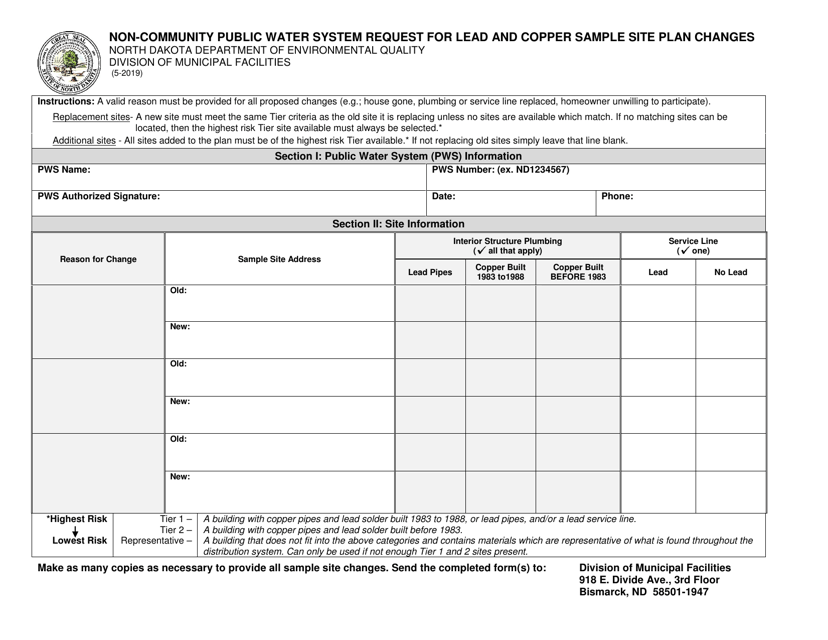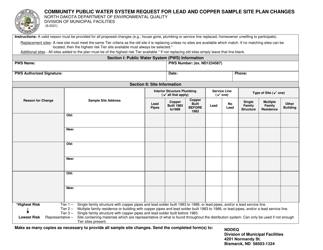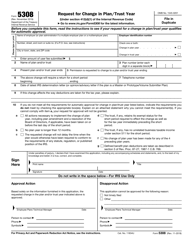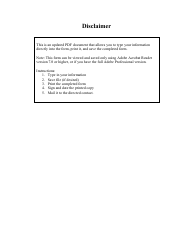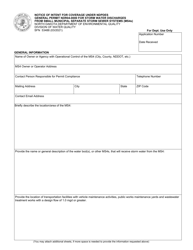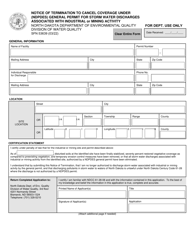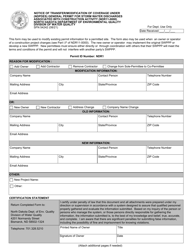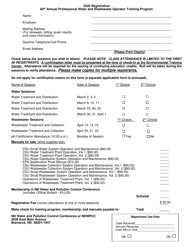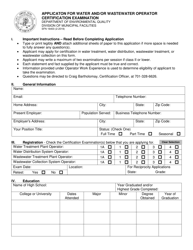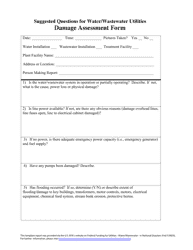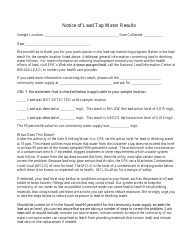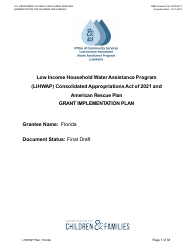This version of the form is not currently in use and is provided for reference only. Download this version of
the document
for the current year.
Non-community Public Water System Request for Lead and Copper Sample Site Plan Changes - North Dakota
Non-community Sample Site Plan Changes is a legal document that was released by the North Dakota Department of Environmental Quality - a government authority operating within North Dakota.
FAQ
Q: What is a non-community public water system?
A: A non-community public water system is a water system that provides water for drinking or other domestic purposes to at least 25 people for at least 60 days per year, but does not serve the same population year-round.
Q: What is a lead and copper sample site plan?
A: A lead and copper sample site plan is a document that outlines the locations where water samples will be collected to test for lead and copper levels in a water system.
Q: Why would a non-community public water system need to request changes to its lead and copper sample site plan?
A: A non-community public water system may need to request changes to its lead and copper sample site plan if there are changes in the system's infrastructure or if new potentially high-risk areas are identified.
Q: Who is responsible for requesting changes to the lead and copper sample site plan?
A: The owner or operator of the non-community public water system is responsible for requesting changes to the lead and copper sample site plan.
Q: What is the process for requesting changes to the lead and copper sample site plan?
A: The owner or operator of the non-community public water system must submit a written request to the appropriate regulatory agency, providing details of the proposed changes and the reasons for the request.
Q: What happens after a request for changes to the lead and copper sample site plan is submitted?
A: The appropriate regulatory agency will review the request and may approve or deny the proposed changes based on their compliance with applicable regulations and the protection of public health.
Q: Why is testing for lead and copper important in a public water system?
A: Testing for lead and copper in a public water system is important to ensure that the water being provided to consumers is safe and meets regulatory standards.
Q: What are the potential health effects of exposure to lead and copper in drinking water?
A: Exposure to lead and copper in drinking water can have adverse health effects, including developmental delays in children, kidney problems, and damage to the nervous system.
Q: Who should I contact for more information about requesting changes to a lead and copper sample site plan for a non-community public water system in North Dakota?
A: For more information, you should contact the appropriate regulatory agency in North Dakota that oversees non-community public water systems.
Form Details:
- Released on May 1, 2019;
- The latest edition currently provided by the North Dakota Department of Environmental Quality;
- Ready to use and print;
- Easy to customize;
- Compatible with most PDF-viewing applications;
- Fill out the form in our online filing application.
Download a fillable version of the form by clicking the link below or browse more documents and templates provided by the North Dakota Department of Environmental Quality.
